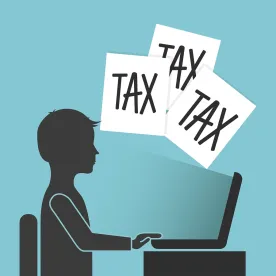The IRS recently released PLR 201726007, the first private letter ruling to interpret the revised management contract safe harbor in Rev. Proc. 2017-13. On one level, the PLR is quite straightforward – it concludes that a teaching agreement between a hospital and a school to provide clinical practice for pharmacy students does not result in private business use. On another level, it’s somewhat surprising that such a PLR was issued and the analysis takes some interesting turns. Read below for more information.
As we’ve discussed before on the blog, there are two layers to analyzing a management contract. First, does it fit within a safe harbor from private business use? If it doesn’t, many times bond counsel will concede the issue, measure the private use from the contract, and decide whether an unqualified opinion can be given or whether an issuer must take a remedial action if the bonds are already issued. However, the failure of the safe harbor isn’t technically the end of the story. An agreement outside a safe harbor is subjected to a “facts and circumstances” test to see whether it creates private business use, so that the facts and circumstances analysis is no longer distinct from the analysis of whether a management contract satisfies the safe harbor from private business use. Previously, we noted that much of the old facts and circumstances analysis has been shoved into Rev. Proc. 2017-13. We have our first response to this theory in the form of PLR 201726007.
The facts of the PLR are as follows. A County hospital with tax exempt bonds outstanding offers training programs for nursing students, medical residents, and other health professionals attending local colleges and universities. The hospital entered into one such agreement with a school to allow the school’s pharmacy students to participate in clinical rotations. Under the contract, the school would take care of the educational and other matters that you would expect a school to do — selecting students and faculty; developing a curriculum; maintaining academic records; ensuring compliance with licensing requirements; ensuring the students comply with the hospital’s rules and regulations; maintaining insurance. The hospital allows the faculty and students access to its facilities but doesn’t guarantee such access, and can immediately remove the students and faculty for cause, e.g. endangering the health and safety of patients, visitors, or staff. No compensation is paid under the agreement. The County bears the risk of loss to the hospital, and the school is not able to control the County, e.g., by board seats on the County board of supervisors.
At first blush, it is somewhat surprising that anyone even requested a private letter ruling on such a routine agreement. Nearly every teaching hospital in the country has many agreements like this with various schools. The hospital gets relatively cheap (or possibly free) labor and the school gets its students an experience that is valuable and often a pre-requisite to obtaining a medical license. One perhaps would have looked at the total lack of any compensation under the agreement as plenty enough reason to move on to the next contract in the pile.
Peculiarly, on the facts above, the IRS simply concluded that the contract “does not meet all of the safe harbor conditions.” The ruling doesn’t say why. We are left to guess, and process of elimination is really the only way to do it. Continuing the interpretive approach that the IRS took in PLRs under Rev. Proc. 97-13 to contracts that didn’t quite meet a safe harbor, the IRS used the elements of the safe harbor under Rev. Proc. 2017-13 as a handy tool to discern whether the contract in this ruling gave rise to private business use based on all the facts and circumstances.
However, if you track as the PLR dutifully marches through the elements of the safe harbor as a guide to the facts and circumstances test, it superficially appears that all of the elements of the safe harbor are satisfied. Even though the PLR ends on a happy note, getting the issuer to the same place with the facts and circumstances test that it maybe should have been able to reach through the safe harbor, we are left to speculate about what was missing – why didn’t the contract meet the safe harbor as such, if it met all of the elements as applied through the facts and circumstances test?
Could it be because the service provider failed to “agree that it is not entitled to and will not take any tax position that is inconsistent with being a service provider?” The PLR’s analysis simply notes that the “[s]chool is not entitled to and will not take any tax position that is inconsistent with being a service provider,” which is not quite the same as agreeing not to take such a position in the written words of a contract. Or, instead, even more bizarrely, did the IRS rule that the contract didn’t meet the safe harbor because there was no compensation under the agreement? The PLR notes that the safe harbor requires that “payments to the service provider under the contract must be reasonable compensation for services rendered,” and that under the contract, “there is no payment of compensation,” which, again, is not quite the same thing.
In a few earlier posts, we questioned whether there was anything left of the facts and circumstances test any more after Rev. Proc. 2017-13 stuffed most of the content that used to exist in the facts and circumstances test into the safe harbor. This ruling appears to be the atomic particle that still exists on the outskirts of the Venn diagram between the facts and circumstances test and Rev. Proc. 2017-13.



 />i
/>i

